In order to analyze and properly evaluate the evolution of the catechism it is necessary to begin within the conception of the catechism prior to Vatican II yet after Vatican I. This concept is paramount for several reasons, first and foremost is the need to properly teach or instruct those within the Catholic Faith (universally) of the catechism within the understanding of a constant changing Church. Secondly, there are two prominent bishops worth mentioning and their achievements to create an ever better-informed Catholic in this constant changing Church.
Our oldest form of catechetical presentation is public instruction delivered to adults and children indiscriminately during the Eucharistic liturgy. This leads one to believe that various changes and interpretations of the Catholic Dogma could be utilized or be swayed in the interpretation due to various thought and ideologies of the various priests.
The latter statement is evident due to the concerns expressed by Most Reverend Pierre-Marie Lacointe. Bishop Lacointe proposed what would latter be entitled as the Directorium Catechisticum Generale, published in Rome in 1971. The bishop argued that a single catechism for the whole Church was not possible or, at least, not proper: Literal uniformity is inconceivable. Directives for a plurality of catecheses for different classes of children and adults would be, in his opinion, more useful.
The Directorium Catechisticum Generale developed gradually through three stages: first, the initial stage corresponds to the period of the “anterpreparatory” and preparatory phases of Vatican II when the ideas of a directory was first broached; secondly, the second stage coincides with the council itself; thirdly, the final stage, when the project was implemented, it took place in the postconciliar period. Unfortunately, Bishop Lacointe died in 1965 before his vision became a reality (Marthaler, 1973, 245).
This concept is not unique to Bishop Lacointe. Bishop O’Hara was by and large responsible for the national CCD conception within the United States. Bishop O’Hara was deeply concerned for the rural area. “Rural life must be recognized as vitally important for the nation’s welfare; social and economic betterment in rural living must go hand in hand with adequate religious education” (Collins, 1975, 177). Bishop O’Hara outlined a program of study and action in rural parish work and suggested formation of a national school policy relative to the cultural and religious needs of the rural areas of America.
The significance and the correlation of these two concepts are limitless. Two Bishops from different locations yet conceiving (for all intensive purposes) the same proposal for religious education and within that education utilizing a “catechism” within instruction that is suited to those whom are receiving that education. Bishop Lacointe and Bishop O’Hara although at the surface may appear to differ in some of the aspects mentioned above however, that is the true significance of their compatibility. For example, Bishop Lacointe was against “one” catechism due to our human condition or nature not to distinguish between the people; with Bishop O’Hara, the rural people were being left behind for numerous reasons; together these Bishop’s pushed for not only a catechism but more importantly a way in which we teach this catechism to the various levels of human understanding within the Catholic Church.
As mentioned earlier in the beginning of this paper, I started between the Vatican councils. Partially this was completed due to the inadequacies noted during the required reading of the catechism at Vatican I with the bishops’ underlying issue of rights vis-à-vis Roman centralization. Also to include that some bishops opposing the proposal for a uniform catechism took issue with the obligatory clause and the impracticality and inadequacy of imposing a single religion text in a multicultural society. Even still, some bishop’s actually aroused the assembly to cries of indignation when Archbishop Haynald of Hungary declared: “To catechize the people is one of the great duties and rights of a bishop; if a catechism is dictated to us, our sermons will be dictated next” (Donnellan, 1973, 235).
The mindset during this period of certain bishop’s was not the same mindset mentioned earlier within this text. In other words, their flock did not appear to be a major concern for a select few; rather, the importance of a “man” within his diocese seems to have taken precedence over the spiritual enhancement and development of the flock in which he was entrusted to care for.
The catechesis at Vatican II wasn’t handled much differently than that of Vatican I. For instance; the proposal for a uniform catechism was officially abandoned, and in its stead the new schema advocated a set of guidelines or a “directory” to serve as a basis for various national directories. However, Vatican II did highlight the responsibility of bishops in preaching and teaching in several of its major documents.
Vatican II, in developing the concept of collegiality, enhanced the role of bishops. This development influenced the editing of the subsequent General Catechetical Directory so that it was designed in consultation with episcopal conferences, was not imposed but sent to them for approval, and was executed as a service document for their benefit (Donnellan, 1973, 241). The democratization of the Church after Vatican II set in motion a gradual shift from centralization toward collegiality, form subordination to subsidiary for the local church, form uniformity to unity as a goal of catechesis (Donnellan, 1973, 242).
The development of the catechism throughout catechetical history has been extraordinary to say the least. There have been proponents and opponents to a proper developmental and structured catechism for the spiritual development of the laity, which is instructed at their level of understanding.
Christian Education
"Since all Christians have become by rebirth of water and the Holy Spirit a new creature(8) so that they should be called and should be children of God, they have a right to a Christian education. A Christian education does not merely strive for the maturing of a human person as just now described, but has as its principal purpose this goal: that the baptized, while they are gradually introduced the knowledge of the mystery of salvation, become ever more aware of the gift of Faith they have received, and that they learn in addition how to worship God the Father in spirit and truth (cf. John 4:23) especially in liturgical action, and be conformed in their personal lives according to the new man created in justice and holiness of truth (Eph. 4:22-24); also that they develop into perfect manhood, to the mature measure of the fullness of Christ (cf. Eph. 4:13) and strive for the growth of the Mystical Body; moreover, that aware of their calling, they learn not only how to bear witness to the hope that is in them (cf. Peter 3:15) but also how to help in the Christian formation of the world that takes place when natural powers viewed in the full consideration of man redeemed by Christ contribute to the good of the whole society.(9) Wherefore this sacred synod recalls to pastors of souls their most serious obligation to see to it that all the faithful, but especially the youth who are the hope of the Church, enjoy this Christian education."
Gravissimum Educationis
Gravissimum Educationis
Thursday, March 19, 2009
Subscribe to:
Post Comments (Atom)






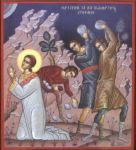







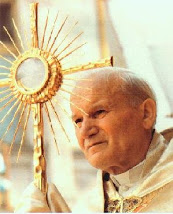

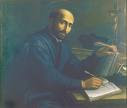




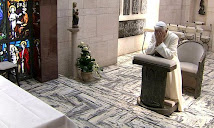




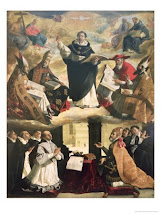
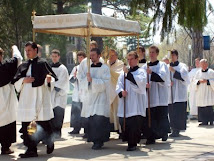

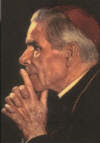

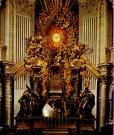
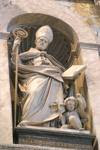



No comments:
Post a Comment